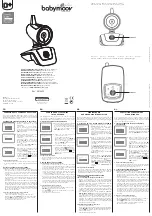
Glossary
Safety Engineering in SIMATIC S7
Glossary-12
System Manual, 04/2006, A5E00109529-05
Reintegration
Once a fault has been eliminated, the -> F-I/O must be reintegrated (depassivated). The
reintegration (switching from fail-safe values to process data) is performed automatically or,
alternatively, only after a mandatory user acknowledgment in the safety program.
For an F-I/O with inputs, the process data pending at the fail-safe inputs are provided again
for the -> safety program after reintegration. For an F-I/O with outputs, the F-system
transfers the output values provided in the safety program to the fail-safe outputs again.
Restart of F-System
When an -> F-CPU transitions from STOP to RUN, the -> standard user program restarts as
usual. When the -> safety program restarts, data blocks are initialized with values from the
load memory as follows:
•
S7 Distributed Safety: all data blocks with -> F-attribute
•
S7 F/FH Systems: all data blocks
•
This occurs analogously to a cold restart. As a result, saved fault information is lost. The -
> F-system performs an automatic -> reintegration of the -> F-I/O.
In contrast to the standard user program, the startup OBs (OB 100 to 102) cannot be
used in the safety program.
S7-PLCSIM
S7-PLCSIM allows you to test and edit your program in a simulated automation system on
your programming device or PC. Since the simulation takes place completely in STEP 7, you
do not need any hardware (CPU, I/O).
Safe State
The basic principle of the safety concept in an -> F-system is the existence of a safe state for
all process variables. For digital F-I/O, this is the value "0", for example.
Safety Class
Safety Integrity Level (SIL) in accordance with IEC 61508 and EN 50129. The higher the
Safety Integrity Level the more rigid the measures for prevention of systematic faults and for
management of systematic faults and hardware failures.
-> S7 Distributed Safety and S7 F/FH Systems fail-safe systems can be used in -> safety
mode up to SIL3.
Safety Function
Safety function is a mechanism built into the -> F-CPU and -> F-I/O that allows them to be
used in -> S7 Distributed Safety or S7 F/FH Systems fail-safe systems.
In accordance with IEC 61508: Function implemented by a safety device in order to maintain
the system in a -> safe state or to place it into a safe state in the event of a particular fault (->
user safety function).













































